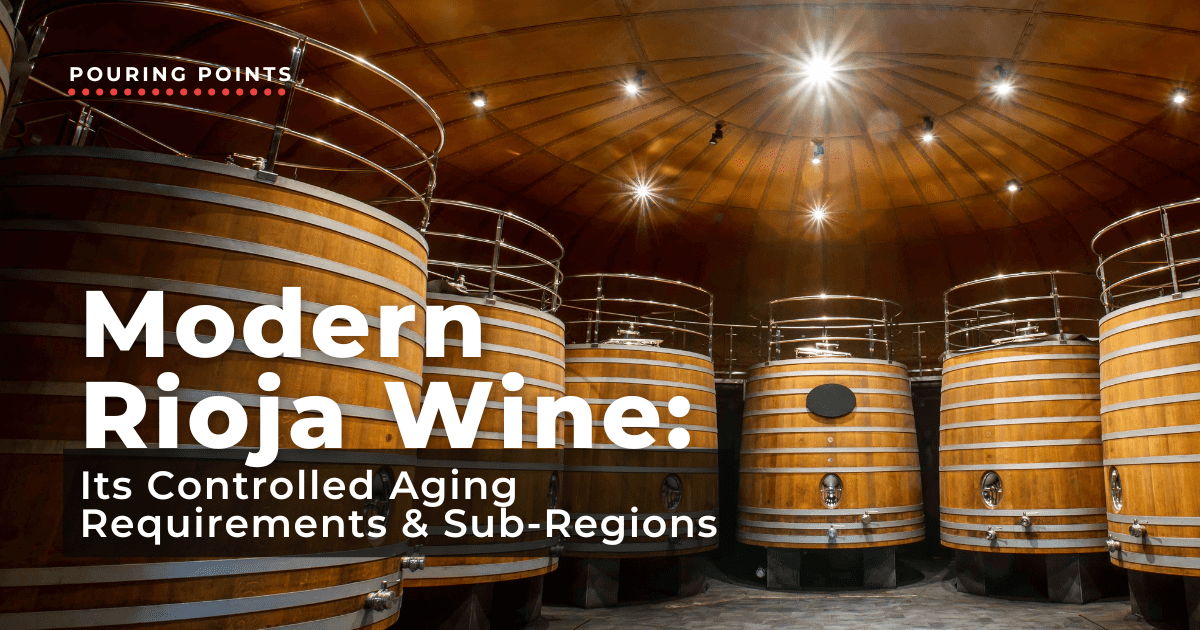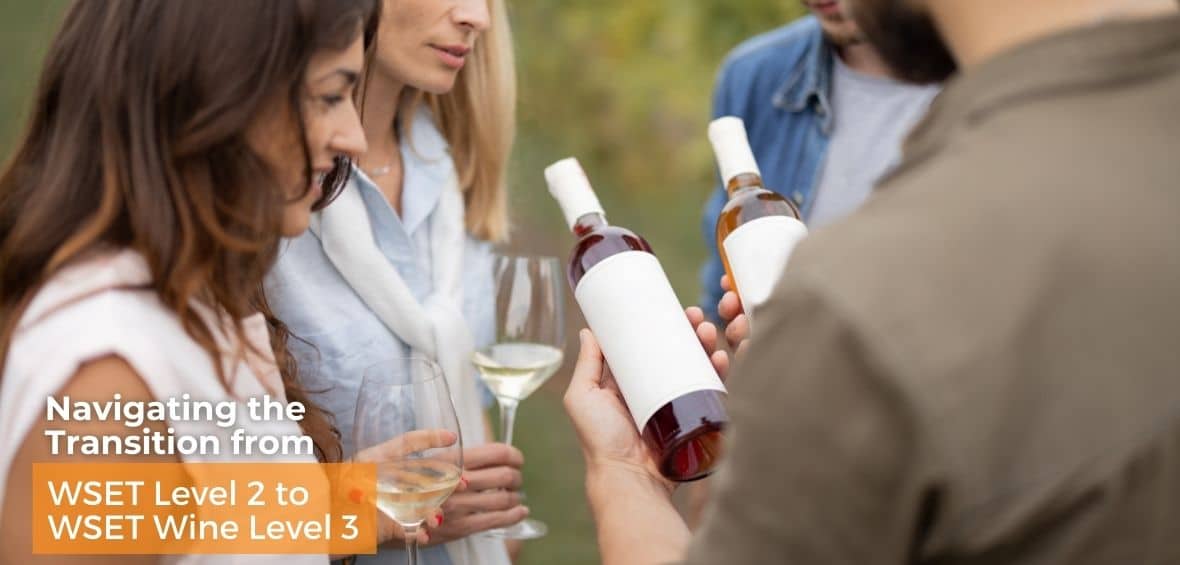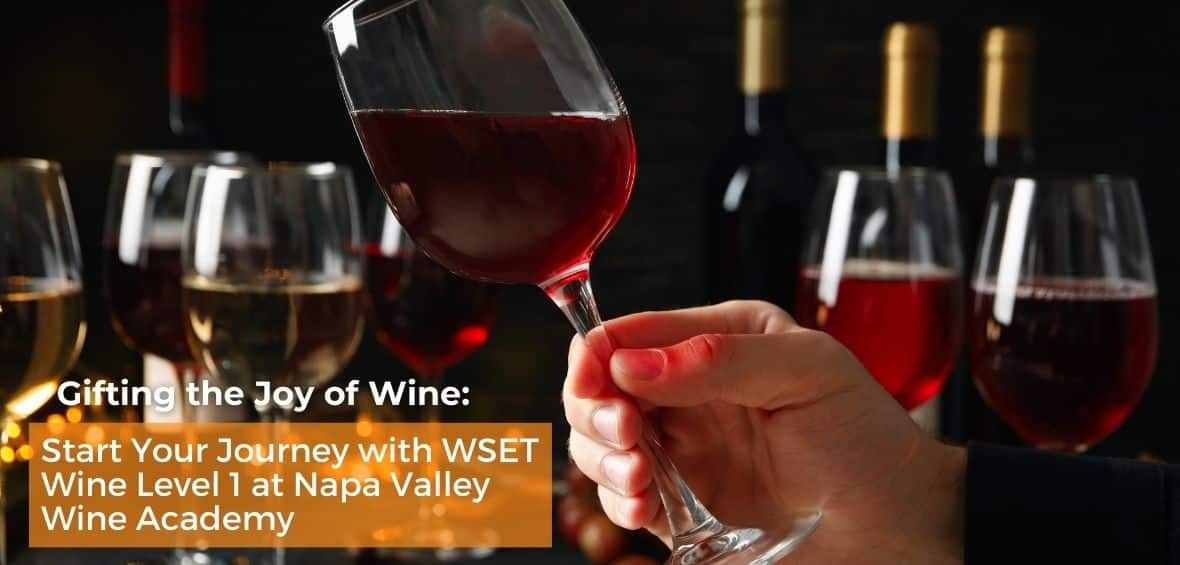Pouring Points
Modern Rioja Wine
Since 2017, the Rioja DOCa has revised some of its aging requirements, with a renewed focus on expressing terroir and raising the quality bar. This is what you need to know.
By Ilona Thompson
Don’t know much about Rioja, Spain? Perhaps it’s time to change that.
Rioja DOC (Denominacion de Origen Calificada) is a region in the Northern part of Central Spain, bisected by the mighty river Ebro.
Today, Rioja is home to 799 registered wineries, stretching across 163,000 acres of planted vineyards within its sub-regions. But vintners have a history of crafting wines here dating back to Roman times—archeological remains of wine presses and wineries from 2,000 years ago offer the best evidence of its past.
Rioja producers consistently turn out world-class bottlings that are coveted by wine collectors, as well as numerous delicious wines that represent value propositions. The best are known for their great concentration and fruit expression, and rich, opulent flavor spectrum—but styles do run the gamut. Luxury red blends can run into the hundreds of dollars per bottle, while scores of other outstanding wines can easily be found for well below $30.
The primary red grapes used in production are Tempranillo (the dominant variety,) Garnacha tinta, Maturana tinta, Mazuelo, and Graciano. White grapes include Garnacha blanca, Macabeo, Malvasia, Maturana blanca, Tempranillo blanco, and Turruntes, which is specific for this region.
Rioja wines are classified by their aging process, and divided into four categories: Generic, Crianza, Reserva, and Gran Reserva. Let’s dive in.
NEW! Rioja Virtual Road Trip
• A weeklong virtual excursion through Spain’s finest wine region
• Stops in Rioja, Haro, Rioja Alta, Rioja Alavesa, and Rioja Oriental
• Videos from some of the best producers in Rioja
• Quizzes to test your Rioja knowledge
Generic
Simply put, this category (WSET students before 2018 will recall the category as “Joven”) will ensure you know the origin of the grapes and the vintage of the wine. There are no minimum aging requirements, and the wine are typically youthful and for early or immediate consumption. It covers wines outside of the Crianza, Reserva and Gran Reserva categories, and those that have been aged in a manner not certified by the Control Board.
Crianza
Red wines require a minimum of a year of oak aging in 225-liter barrels, followed by a year in bottle. They are fuller-bodied and savory with lots of red and black fruit, and a dazzling array of baking spices courtesy of oak influence. For whites and roses, the total aging regime is the same, the main difference being six months in the barrel, versus a year.
Reserva
This category is subject to a successful growing season; with wines usually made only in very good or excellent vintages. For reds, the minimum aging requirement is three years, with at least 12 months in oak, and the rest in bottle. For whites and roses, the total aging time is two years, with six months in barrel. The wines are famous for their tertiary aromas and flavors and often feature dried fruit flavors
Gran Reserva
Normally made in exceptional vintages from top-quality grapes from that harvest. The minimum aging requirement for Gran Reserva reds is five full years prior to release. However a vintner reaches the five-year (or 60-month) mark of aging, they are required to age the wine at the very minimum for two years in barrel and two years in bottle. Some producers choose to age longer in barrel, others go for longer in the bottle. For whites and roses, it is four years in total, with a minimum of six months in oak.
There were recent modifications by the Regulating Council, implemented in 2018. It expanded the parameters from strictly aging regimes to wine origins, such as a particular village or township that represents the specific personalities or terroir in terms of vineyard sites, as well as unique microclimates. There is a single vineyard designation (Vinedo Singular,) a village designation (Vino Municipio,) and a regional one (Vino de Zona) that can now be displayed on the labels.
The Regions
Rioja wines are made from fruit grown in the following sub-regions: La Rioja, Navarre, and the Basque province of Alava, encompassing more than 162,000 acres of vineyards. It is subdivided into three distinct zones—Rioja Alta, Rioja Oriental, and Rioja Alavesa. Many of the wines are blends from all three regions.
Rioja Alta (~68,000 acres)
As the name suggests, this westernmost growing region is located at high elevations that signify a shorter growing season. The soils are a mix of alluvial, clay, and iron, which results in bright, intense, elegant fruit with a lighter mouthfeel. Some of the top-notch producers are Bodegas Muga, La Rioja Alta, R Lopez de Heredia, and Bodegas Contador.
Producer Spotlight: R Lopez de Heredia.
Perhaps the best internationally known producer, including the United States, Lopez de Heredia is a powerful showcase for history and tradition. They are one of the handful of bodegas operated by a family and regulated by the Denominación de Origen Calificada Rioja.
Continuously family-owned and exclusively estate, with no outside fruit purchase contracts, the winemaking practices include utilizing native yeasts with no fining or filtration. The brand even crafts its own barrels, aging wines for six to eight years.
More than 150 years ago, Don Rafael López de Heredia y Landeta came to the Rioja Alta region and fell in love with the terroir and the winemaking possibilities. Construction of the bodega began in 1877, and the wines have continually been produced following the utmost rigorous standards of quality ever since.
Rioja Oriental (~61,000 acres)
This area is subject to a Mediterranean climate with much drier, warmer weather that is drought-prone. The soils are dominated by clay, silt, and alluvial components that contribute to deep, dark, saturated wines with lower acidity and higher alcohol content. They are often used as a backbone for blends that feature the neighboring Rioja regions. Some of this region’s world-class producers are Alvaro Palacios, Bodegas Vinicola, and Bodegas Ontanon. (WSET students of yesteryear will remember this region as Rioja Baja.)
Producer Spotlight: Alvaro Palacios
Many in the industry consider Alvaro Palacios, who studied enology in Bordeaux and worked for Jean-Pierre Moueix at Chateau Petrus, synonymous with Spanish spirit and celebrate his mastery of modern interpretation of classic winemaking, which is steeped in tradition, yet infinitely innovative.
At present, Palacios makes wine in Priorat and Bierzo under his own label, and, since his father’s passing in 2000, serves as the winemaker for his family’s Remondo Estate in Alfaro in Rioja. He is a proponent of indigenous yeasts and channels the voice of the vineyard like no other, creating a perfect partnership between the land and the craft. Several of his wines enjoy cult status and perennially score highly with critics and consumers alike, including the perfect 100-point scores from famed critic Robert M. Parker Jr.
Rioja Alavesa (~33,000 acres)
The smallest of the three, Alavesa is located in Basque County’s province of Alava, with vineyard elevations ranging from 1,300-4,000 feet. Its proximity to the Atlantic Ocean, with its cooling effects and continental climate, is highly beneficial to grape-growing. The soils are rich in clay and limestone, producing higher acidity and fuller body, extracted wines. Some of the stellar producers include Bodegas Palacios Remondo, Bodega Lanzaga, Marques de Riscal.
Producer Spotlight: Marques de Riscal
With more than 160 years of growing grapes and making wine, Marques de Riscal brand is synonymous with passion and innovation in the ever-evolving landscape of wine. The wines are exported to more than 110 countries which comprise over 60 percent of total production. The wines are known for their unique characteristics, approachability, deliciousness and value.
Visitors can learn about their journey in crafting world-class red and white wines by visiting the magnificent Marqués de Riscal City of Wine, launched in 2006.
This impressive complex includes the historical bodega, a luxury hotel designed by the famous Canadian architect Frank O. Gehry, a spa, and, of course, the ultimate in fine dining curated by Michelin-starred Riojan chef Francis Paniego.
Notably, in 2022, Herederos del Marqués de Riscal was chosen as the world’s second-best vineyard in the contest of “World’s Best Vineyards” – a highly prestigious ranking that celebrates top tourism destinations.














